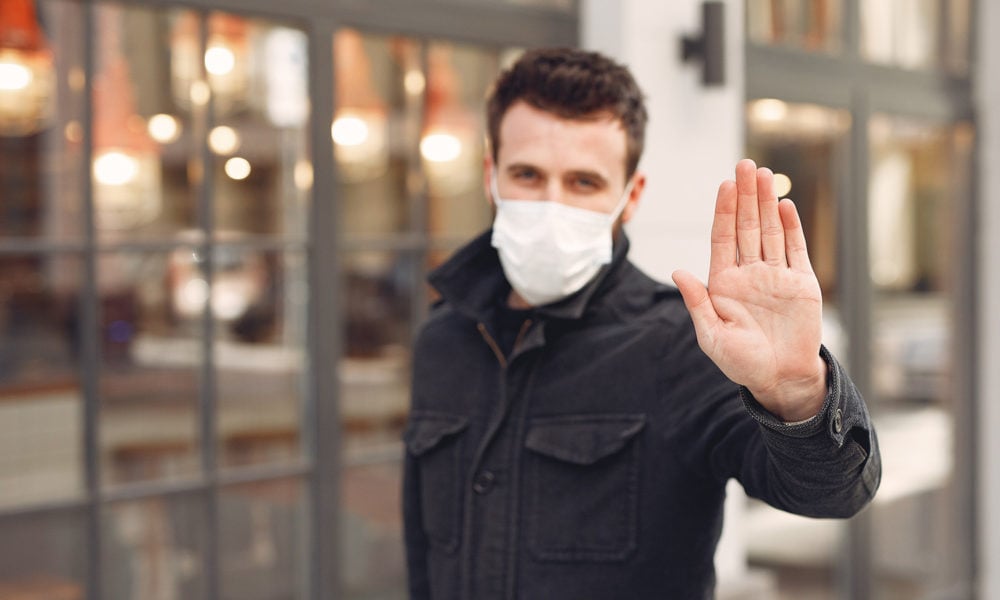Disinformation is like a deadly virus. It originates from an initial source, replicates and spreads outwards, and can result in harm and death. Disinformation—false statements and images that have been intentionally manufactured—is a particularly virulent form of misinformation that can spread faster and with even more destruction. This has been especially true during the COVID-19 era, during which disinformation is so rampant that established scientific concepts continue to be distrusted, such as the value of mask wearing and the need for large-scale testing.
But, as we lay out in our new web page, you don’t have to be a victim of this disinformation scourge. There are steps you can take that essentially allow you to develop ‘antibodies’ and inoculate yourself against disinformation, which in turn, allows you to stop the chain of transmission.
Sources of the disinformation virus
The spread of COVID-19 disinformation fits many of the patterns that we traditionally associate with disease outbreaks, so much so that the Secretary-General of the United Nations has described this phenomenon as “a dangerous epidemic of misinformation” whose “vaccine is trust… trust in science.”
So in order to protect ourselves from its harmful effects—effects that even experts in the field experience—let’s analyze the disinformation pandemic using the same tools as epidemiologists. The CDC says that for an infectious disease to spread, three things need to exist:
- A source that can infect people
- People who are susceptible to infection
- A way to transmit the infection from one person to another
The sources of COVID-19 disinformation tend to be particularly motivated individuals or groups who spread disinformation in an attempt to obtain power, money, or to sow chaos. Major sources of COVID-19 disinformation have included foreign governments, snake oil salesmen, anti-vaxxers, white supremacists, corporations, politicians, conspiracy theorists, and right-wing media.
Two major ‘reservoirs’ of COVID-19 disinformation appear to be driving its ability to “go viral,” what one group of Oxford researchers call top-down and bottom-up sources. Top-down sources are people with enormous influence, such as high-level politicians or celebrities, who choose to act as disinformation ‘superspreaders,’ meaning that they issue false statements that influence a large number of people. The success of superspreaders can also cause a series of outbreaks of closely related disinformation—for instance, in the aftermath of President Trump’s comments about sunlight as a potential COVID-19 treatment, thousands of people began to push UV light therapies as a way to “cure” COVID-19.
Bottom-up sources are members of the public peddling false information, which appears to generate about 80 percent of the COVID-19 misinformation seen on social media. One particularly prominent ‘hot zone’ for emerging pieces of disinformation are the places where extremist groups gather online. A physicist from George Washington University has identified a “hate multiverse” that is exploiting the pandemic to spread racism and other malicious agendas, which can spread to outside groups through “wormhole” links. Private group mechanisms traditionally utilized by white supremacists are being co-opted during the COVID-19 era and may be particularly difficult to shut down, resulting in what some researchers term “hidden virality.” Because Facebook largely relies on users to flag false statements, disinformation can propagate in private Facebook groups, since people in these private groups share the same worldview and are therefore less likely to flag bad information.
How people are susceptible to disinformation
The people intentionally spreading disinformation can take advantage of certain cognitive biases that we all have in order to continue the chain of transmission. My colleague Genna Reed goes into detail on some of the common ways that disinformation takes advantage of how our brains work, such as by utilizing confirmation biases and manipulating people’s emotions.
Here are some specific ways that the science suggests disinformation can spread:
- One study found that the simple presence of an image alongside a statement increases our trust in its statement, even if it is only tangentially related to the claim. So a generic image of the novel coronavirus accompanying an outlandish claim is more likely to evade your “immune system” that detects disinformation viruses.
- We often mistake the feeling of familiarity for factual accuracy, so the simple repetition of a statement—like when you see multiple postings of the same story on your Facebook news feed—can increase the belief that something is more factual.
- In one preprint study (i.e. not yet peer reviewed), 25 percent of participants rated a false headline on COVID-19 as true; however 35 percent, when asked whether they would share the headline with others, agreed to pass on the false information. According to the study’s author, this “suggests [that] people were sharing material that they could have known was false, if they had thought about it more directly.”
Social media is a particularly fertile ground for spreading disinformation
For epidemiologists, one of the causes of real alarm is when a pathogen with a pandemic-level potential is able to spread from person to person, also known as community spread. When COVID-19 reached this level in late February in the US, CDC officials began warning us of the need for school and office closings and other major disruptions to everyday life. Not all pathogens get to this level—for instance, the bird flu outbreak of 2005 never quite made this evolutionary leap—but today’s social media landscape is particularly fertile ground for causing the ‘community spread’ of some of the most virulent forms of disinformation, such as the 5G conspiracy theory.
Since social media companies were never designed as platforms to spread accurate information, the transmission of disinformation has been shown to be prominent on sites like Twitter, Facebook, and YouTube. Social media companies, by design, are built to keep you on the site longer, which incentivizes the spreading of content that increases engagement rather than content that is more accurate. While social media companies have increased their vigilance and labelling of false information, they still have a long way to go.
Only you can stop disinformation
Since disinformation can generate a false sense of security, it can lead people to be less careful and heighten their risk of exposure to the novel coronavirus. Therefore, we all have a part to play in ‘flattening the curve’ of disinformation. We have created some video resources to help you recognize disinformation and halt its spread.
Your actions can make a huge difference. One study from the UK showed that during a disease outbreak, reducing the amount of harmful advice being circulated by just 10 percent resulted in fewer people getting sick with the disease. By promoting good sources of information, like the CDC and WHO, and by ‘inoculating’ yourself from disinformation, you can help stop the spread of disinformation.

